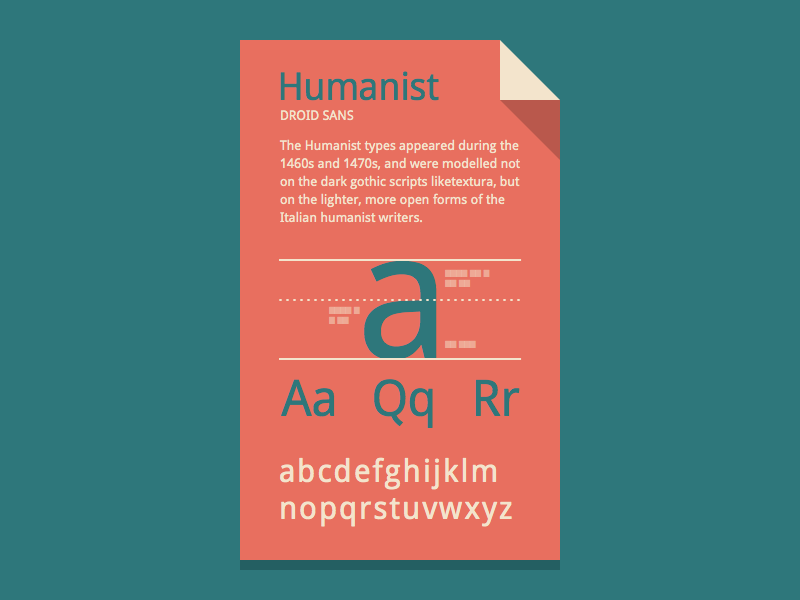

The path by which humanist came to be used as a descriptor of letterforms consisted of a chain of associations. This will require an investigation into the letterforms of, and rhetoric surrounding, two humanist sans-serif examples, Gill Sans and Optima. In the second half of the article, I will consider how, when, and why humanist has been applied to sans-serif designs by classifiers after Vox. That broader history, I will contend, attracted Vox to the term. I will trace more generally how the word humanist was used, and how those uses changed in the twentieth century. Then I will take a closer look at Vox's 1954 classification scheme and its relationship to prevailing terminology in the printing world. In this article, I will first look at the origins of the term humanist.

Examining the changing meanings of humanism in different contexts and at different times will help account for the persistent attractiveness the term held for classifiers of type designs in the twentieth century. I argue that, while the term specifically denotes certain fifteenth-century texts, it was the term's connotations that made it attractive to Vox and that warranted its use in classifications thereafter. Given these vagaries of definition, it is worth asking how and why humanist has persisted as a label. Moreover, the stylistic features that distinguish a humanist serifed font in Vox's scheme are not the same features that distinguish the faces later named humanist sans types. For example, Maximilien Vox's employment of "humanes" in his influential 1954 classification scheme did not codify an already accepted category before Vox, the term was rarely used for type, and when it was, it sometimes referred to types other than those that Vox would group under his labels. However, historically its applications have been inconsistent. Humanist is a label commonly used to characterize type designs today. This is revealed by research on the label "humanist" as applied to type. An examination of the historical contexts of older classification schemes shows that not only type design, but also type classification and labeling, are cultural products. For a novel, popular choices would be Garamond, Baskerville, Caslon, Goudy or Bembo, amongst others - but it is really a. However, preservationists and reformists alike have paid little attention to the historical situations that shaped type categories and the terminology used to label them. The second camp argues that existing classifications of type designs are problematic for one reason or another, and often proposes a new scheme that is argued to be more responsive to the needs of typographers or to an understanding of the typefaces that populate the current world of typography. The first, usually appearing in handbooks or similar instructional contexts, presents type classification as an inherited set of categories that should be understood by the reader as the established jargon of typography. Writing on type classification largely falls into two camps. The classification of type designs seems to be a problem that is perennially addressed but never solved.


 0 kommentar(er)
0 kommentar(er)
